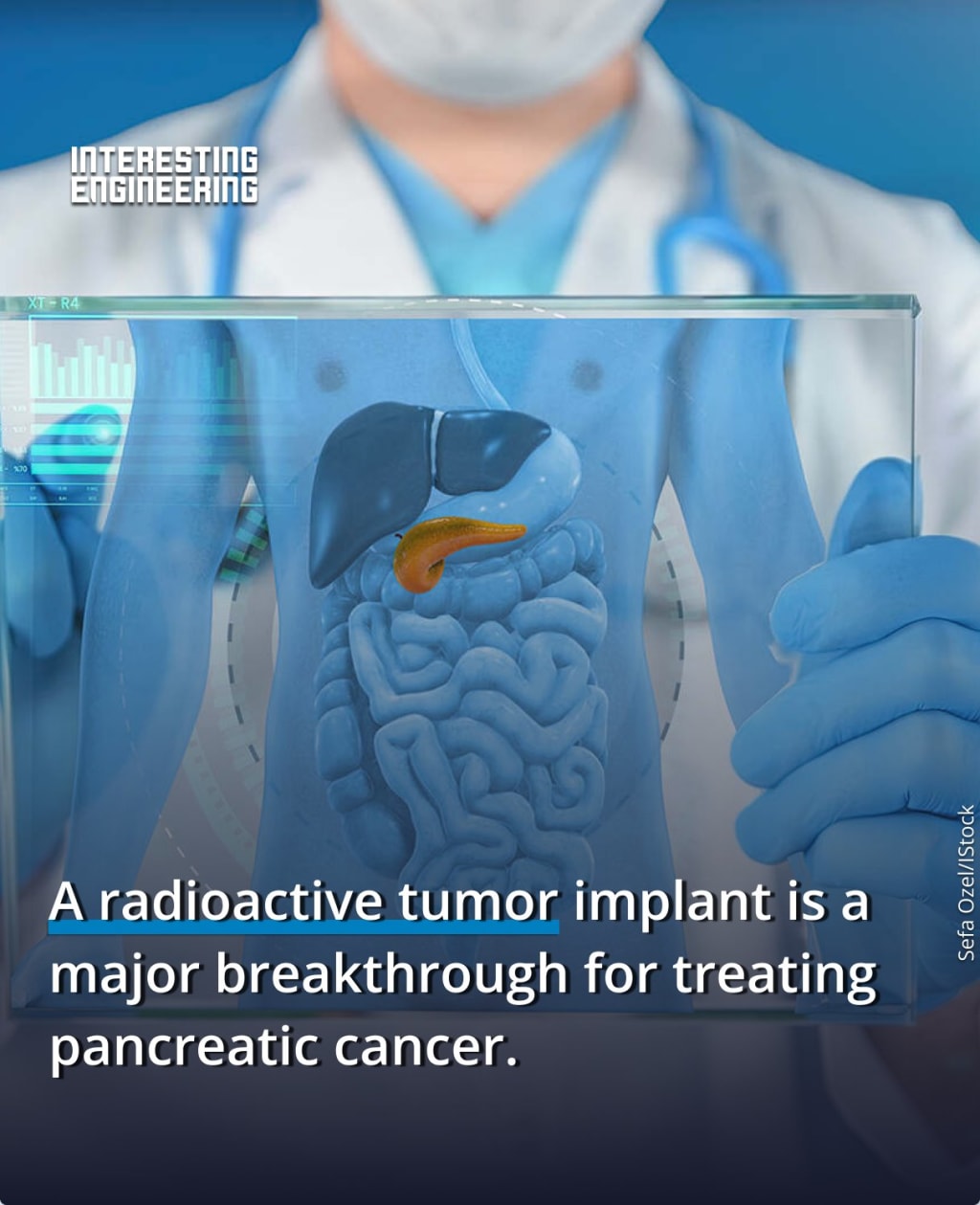
In what can be called a quantum leap in medical science, the most successful treatment for pancreatic cancer ever recorded in mouse models is here. Biomedical engineers at Duke University have developed an approach that completely eliminates tumors in 80 percent of mice across various model types, as opposed to most trials that solely halt the growth of such tumors.
The third leading cause of cancer-related death, pancreatic cancer is known to be quite challenging to treat. Current treatment methods include chemotherapy, which is ineffective unless a certain threshold of radiation reaches the tumor, and implanting a radioactive sample encased in titanium directly within the tumor, which has its faults as it tends to damage the surrounding tissue over some time.
"There's just no good way to treat pancreatic cancer right now," Jeff Schaal, who conducted the research during his Ph.D. in the laboratory of Ashutosh Chilkoti, the Alan L. Kaganov Distinguished Professor of Biomedical Engineering at Duke, said in a statement.
Schaal and the team decided to combine traditional chemotherapy drugs with a new method for destroying the tumor. The treatment comprises implanting radioactive iodine-131 directly into the tumor with a gel-like depot that protects healthy tissue. The latter is absorbed by the body after the radiation fades away.
"We did a deep dive through over 1,100 treatments across preclinical models and never found results where the tumors shrank away and disappeared as ours did. When the rest of the literature is saying that what we're seeing doesn't happen, that's when we knew we had something extremely interesting," said Schaal.
The results are published in the journal Nature Biomedical Engineering.

Combining traditional chemotherapy with a new method
The implantation method includes a substance made of elastin-like polypeptides (ELPs), "which are synthetic chains of amino acids bonded together to form a gel-like substance with tailored properties," according to the release.
Though the ELPs exist in a liquid state at room temperature, they form a stable gel-like substance within the warmer human body. The ELPs were injected into a tumor along with iodine-131, which resulted in the formation of a small depot encasing radioactive atoms.
This depot encases the iodine-131 and prevents it from leaking into the body. According to the release, the iodine-131 emits beta radiation, which penetrates the bio gel and "deposits almost all its energy into the tumor without reaching the surrounding tissue." Over time, the ELP depot is absorbed by the body — "but not before the iodine-131 has decayed into a harmless form of xenon".
Schaal and his team tested the new treatment with a commonly used chemotherapy drug, paclitaxel, on various mouse models of pancreatic cancer. The researchers tested the method on mice with cancers just under their skin created by several different mutations known to occur in pancreatic cancer and on mice that had tumors within the pancreas, which is much more difficult to treat.
The tumors were eliminated in three-quarters of the mouse models about 80 percent of the time
The tests saw a 100 percent response rate across all models, "with the tumors being completely eliminated in three-quarters of the models about 80 percent of the time".
"We think the constant radiation allows the drugs to interact with its effects more strongly than external beam therapy allows," Schaal said. "That makes us think that this approach might actually work better than external beam therapy for many other cancers, too."
Next, the researchers will test their approach on large animals, after which they will look toward a Phase 1 clinical trial in humans.
"My lab has been working on developing new cancer treatments for close to 20 years, and this work is perhaps the most exciting we have done in terms of its potential impact, as late-stage pancreatic cancer is impossible to treat and is invariably fatal," Chilkoti said. "Pancreatic cancer patients deserve better treatment options than are currently available, and I am deeply committed to taking this all the way into the clinic."
Abstract:
Locally advanced pancreatic tumours are highly resistant to conventional radiochemotherapy. Here we show that such resistance can be surmounted by an injectable depot of thermally responsive elastin-like polypeptide (ELP) conjugated with iodine-131 radionuclides (131I-ELP) when combined with systemically delivered nanoparticle albumin-bound paclitaxel. This combination therapy induced complete tumour regressions in diverse subcutaneous and orthotopic mouse models of locoregional pancreatic tumours. 131I-ELP brachytherapy was effective independently of the paclitaxel formulation and dose, but external beam radiotherapy (EBRT) only achieved tumour-growth inhibition when co-administered with nanoparticle paclitaxel. Histological analyses revealed that 131I-ELP brachytherapy led to changes in the expression of intercellular collagen and junctional proteins within the tumour microenvironment. These changes, which differed from those of EBRT-treated tumours, correlated with the improved delivery and accumulation of paclitaxel nanoparticles within the tumour. Our findings support the further translational development of 131I-ELP depots for the synergistic treatment of localized pancreatic cancer.






Comments
Venu is not accepting comments at the moment
Want to show your support? Send them a one-off tip.